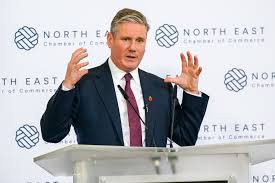
There is a charming Edwardian photo on the wrap-around cover of Alwyn Turner’s latest book. The picture was apparently taken at the St Giles Street Fair in Oxford around the time the period covered in this book came to an end, i.e. around 1910, the year in which King Edward VII died. It is essentially a busy crowd scene. The rear of the shot is filled with dozens of heads disappearing into the distance but the people in the foreground are clearly visible. Some are clearly aware of the camera and are smiling or looking self-consciously at it. A few of them would be clearly identifiable to anyone who knew them well. It’s unlikely of course, but if you knew anyone living in Oxford at the time, you might spot someone you recognise. The parents, grandparents or great-grandparents of anyone reading this might well be standing there.
Virtually everyone in the picture is wearing a hat of some sort. Most of the males are wearing cloth caps, although a few are wearing boaters or the odd bowler. Although there are one or two hatless boys visible, there are no women without hats at all. To me, the picture evokes memories of films set in the era such as Mary Poppins or The Railway Children. Both those films were made in the Sixties, when the Edwardian era was as much within living memory as the Sixties are to us today. Given that the oldest person living in Britain at the time of writing was born in 1909, we can be certain that everyone in the picture is now dead, in most cases probably for a long time. Some will have died in the world wars, some in the 1918 Influenza pandemic. Some will have lived to witness Neil Armstrong stepping on the moon on TV in 1969. None would have expected to be on the cover of a book, published in the year 2024.

This book is their story. Not their story specifically, but the story of the people of the Edwardian era (1901-10), which can be extended up to 1914. Author Alwyn Turner has most covered the more recent decades in his latest books but here he explores a period tantalisingly beyond the reach of living memory. He focuses heavily on many of the more colourful figures of the time such as the murderer Dt. Crippen (pictured above) and the Liberal MP and fraudster, Horatio Bottomley, who inspired Kenneth Grahame to create the character of Mr Toad. We learn that Edward VII owned a golf bag made entirely from the skin of an elephant’s penis. Filled with lots of surprising nuggets of trivia about the details of Edwardian life, this is never less than an enjoyable and entertaining read.

Book review: Little Englanders: Britain in the Edwardian Era., by Alwyn Turner. Published by: Profile Books






























































